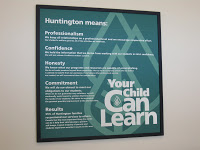Published on KSL.com (click HERE for the link)
Published for the Cross Timbers Gazette (click HERE for the link)
“This is definitely going to be the best one!” my third-grade daughter announced confidently. She had just spent several hours on a model of the solar system and was gluing on the final sparkly flourishes.
Ah, the optimism of youth!
Managing kids’ expectations can be tricky, but I gave it my best shot by explaining how hard all the kids in her class must have worked on their solar systems. For the most part, I assured her, the projects were likely to be equally awesome.
On open house night, my daughter grabbed my hand and enthusiastically guided me through the crowds of parents and kids until we arrived at the third-grade hallway. I saw the solar system models before she did and gave serious thought to activating the nearest fire alarm. Sure, this may have caused mass confusion and a possible trampling or two, but anything seemed better than letting my daughter see the displays.
I felt like I had stepped into a children’s science museum. One of the displays even featured a built-in light to illuminate its perfectly formed spheres. There is no way on Earth (or any other planet in our solar system) that third-graders had built the majority of those models.
So it wasn’t even a little bit surprising when my daughter announced dejectedly that hers was definitely the worst one.
What really got me is that she was right. On the surface, that is. But she had to understand that her comparison was one of apples to oranges — i.e. a project designed and created primarily by a 9-year-old up against dozens of projects designed and created primarily by adults. I did my best to explain this to her without belittling her classmates’ parents, who had clearly given these projects their best efforts.
My daughter’s teacher seemed thrilled with the models, which led me to believe that she basically expected parents to take a leading role in their creation. We are fairly new to the school and I’m still familiarizing myself with its culture, so I came home and reread the assignment details carefully to see if I had missed something about this being a “family project.” I hadn’t.
Therein lay the problem.
My daughter’s solar system model is prominently displayed in our home, where several visitors have praised its awesomeness. I know this was a lesson for my daughter that life simply isn’t always fair — and I’m not opposed to my kids learning such lessons — but I’m still hoping that this praise helps boost her confidence when it comes time to tackle her next school project.
As a former educator, I understand that there are two sides to this issue. Teachers have no more control over what happens at home than parents do over the types of assignments that get sent home. But since we all love these kids and want what’s best for them, a discussion about what could help level the playing field might be in order.
As food for thought, here are a few questions:
What do teachers honestly expect will or should happen when projects get sent home? Should students be required to complete a certain percentage of a project? If parents take the lead role on projects, how do teachers evaluate what students are capable of? Should bonding between parent and child be considered as a factor? And what of students who receive little or no assistance from adults in the home?
Most importantly, what is truly in the best interest of the students?
Fully recognizing that every school, family, teacher and child is unique and that there is no one right answer, I would be interested in hearing perspectives from both parents and teachers on this issue.
Time to weigh in …












Our kids' projects never stack up. But they have more confidence than their superior-project-toting peers. Keep up the insistence on self creation. It will win in the long run!!!
This was a very interesting subject. Thank you for taking it on. My heart broke for your daughter just as it will for mine.
I try to let my kids verbalize a design, throw in my two sense, then see what THEY want to do. Once decided I help them as minimally as possible because I have always thought it was supposed to be their project.
I do agree with above comment. I would also love to see clearer instructions. It seems like I am contacting the teacher for clarification fairly frequently.
Thanks for translating my feelings into words! I struggle with this dilemma, whether to let (or take the time to coach, teach and correct) my children do complex projects mostly on their own, the right course I think, or just give them an idea and turn the process into a "do this, do that" activity that fulfills the assignment. I'm guilty of the latter often, but just as often find that working together and complimenting my kids' contribution is much more fulfilling than the actual worth of the project. Unfortunately, too often the assignment is way beyond the child's ability and without any teacher direction or guidance, it's almost required for a parent to step in and play a major role. I'd love to see clearer instructions and expectations when it comes to complex project assignments.